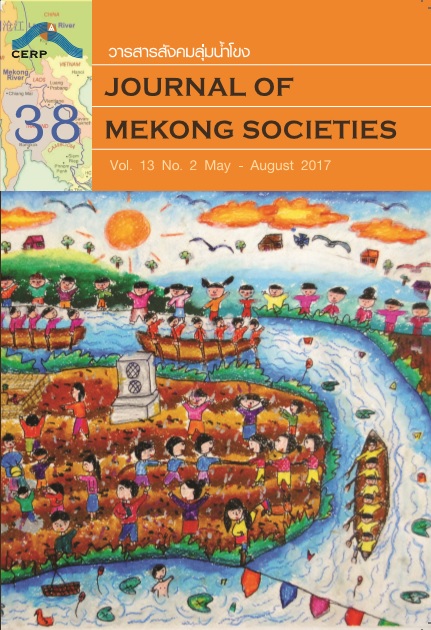State, Silk and Ethnicity of the Suai in Pueai Mai Village, Sisaket Province
Main Article Content
Abstract
The objective of this article is to investigate the ethnicity of the Suai in a multi-ethnic village in Thailand’s lower northeast region in the context of state development at the local level. The findings in the article were partially drawn from qualitative research conducted in Pueai Mai village, Phromsawat sub-district, Phayu district, Sisaket province, of which semi-structured interviews including participant and non-participant observations were the main data collection methods. According to the research, community economy and tourism development projects by the Thai state have played a vital role in creating the “Suai-ness” discourse, which revolves around hand-woven, ebony-dyed brocade silk-locally called “pha kep” — of the Suai. Through the support of local government organizations, Pueai Mai villagers established a sewing group whose members have produced pha kepin the form of both textiles and local-style shirts. Through the One Tambon One Product (OTOP) campaign initiated by the Thai government, pha kephas been promoted on many occasions until it has become the staple product of Sisaket. While the Thai state exercises its power at the local level by constructing fixed Suai identity solely linked to pha kep, the Suai themselves have seized this opportunity to redefine their ethnic identity through a sewing group network as well as through the Indigenous Knowledge Learning Center Project at the local secondary school.


